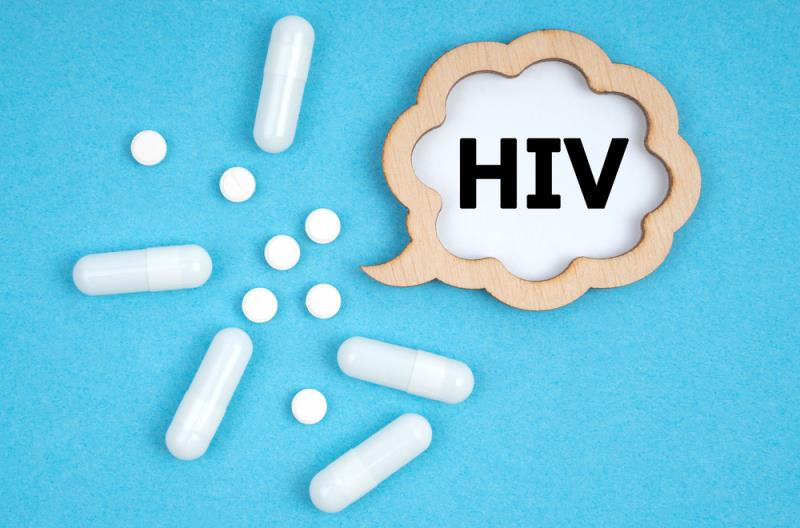Addressing adherence gaps in HIV treatment: High medication forgiveness with B/F/TAF





While the success of HIV treatment depends mainly on adherence to lifelong antiretroviral therapy (ART), many people with HIV (PWH) struggle to maintain perfect adherence for a variety of reasons. In an interview with MIMS Doctor, Dr Onyema Ogbuagu, Associate Professor of Medicine and Pharmacology at Yale School of Medicine, US, discussed the importance of adherence and the concept of medication forgiveness with modern ART, highlighting how integrase strand transfer inhibitor (INSTI)–based three-drug regimens, such as bictegravir/emtricitabine/tenofovir alafenamide (B/F/TAF), provide reassurance for both PWH and healthcare providers.
Importance of adherence to ART
Medication adherence is a crucial factor in the success of ART for maintaining viral suppression in PWH, as suboptimal adherence can lead to resurgence of viral replication, resulting in treatment resistance and limiting future therapeutic options. PWH with detectable viral loads also pose a risk of transmitting the virus within the community. [Am J Manag Care 2013;19:s231-s237; J Antimicrob Chemother 2025;80:281-291]
Adherence can be influenced by a range of individual factors. For some PWH, limited health literacy can be a barrier, making it difficult for them to understand the rationale behind treatment or fully accept its necessity. Those with busy lifestyles or demanding work schedules may struggle to take their medication consistently. Social stigma associated with HIV is another key factor affecting adherence, as some PWH may remove medication labels, hide pills, or take extra precautions to keep their treatment private. [Am J Manag Care 2013;19:s231-s237; J Antimicrob Chemother 2025;80:281-291; J Int AIDS Soc 2013;16:18640]
“For elderly PWH with multiple comorbidities, polypharmacy with different dosing schedules, along with age-related forgetfulness, can easily lead to missed doses,” said Ogbuagu. “Adolescents are another group who struggle with adherence, as they may not recognize the importance of daily medication for their long-term health at their age.”
For PWH struggling to maintain perfect adherence, failing to meet expectations creates an emotional burden. “It is common for them to experience anxiety, shame, or fear when reporting missed doses,” Ogbuagu shared. “But we are all human, and occasionally a missed dose happens. A forgiving drug that maintains virologic suppression at a lower adherence threshold not only provides clinical benefits, but also relieves some of the emotional burden, offering a safety net for PWH and reassuring them that it is not the end of the world, and that they and others remain protected.” [J Antimicrob Chemother 2025;80:281-291; AIDS Behav 2020;25:961-972]
Higher forgiveness with modern ART: B/F/TAF
Historically, adherence of ≥95 percent was considered necessary for oral ART success. However, modern ARTs, such as the INSTI-based single-tablet B/F/TAF, have demonstrated higher forgiveness with a notably lower adherence threshold to achieve viral suppression, mainly due to their potent antiviral activity, improved pharmacokinetics, and high barrier to resistance. [J Antimicrob Chemother 2025;80:281-291]
“Bictegravir has strong potency and a half-life of 17.3 hours, while TAF, a tenofovir prodrug, efficiently loads tenofovir into peripheral blood mononuclear cells, where the virus replicates, providing a longer intracellular half-life and sustained antiviral activity,” explained Ogbuagu. “With B/F/TAF’s high barrier to resistance, the virus must accumulate multiple resistance mutations before the drug loses effectiveness.” A 5-year follow-up of two randomized clinical trials showed that B/F/TAF maintained high rates of viral suppression with no treatment-emergent resistance, indicating the regimen’s high barrier to resistance and long-term effectiveness as initial treatment for HIV- 1. [Biktarvy Hong Kong Prescribing Information; J Antimicrob Chemother 2025;80:281-291; EClinicalMedicine 2023:59:101991]
The high forgiveness of B/F/TAF has been consistently demonstrated across studies, with better viral suppression maintained than three-drug regimens of dolutegravir (DTG; another INSTI) + two nucleoside reverse transcriptase inhibitors (NRTIs) when adherence levels are low. [J Antimicrob Chemother 2025;80:281-291]
In a pooled retrospective analysis of five phase III trials, virologic suppression rate (HIV-1 RNA <50 copies/mL) remained high across all adherence groups for participants on B/F/TAF. However, patients with low adherence to DTG + two NRTIs had significantly lower virologic suppression vs those with intermediate (p=0.002) or high adherence (p<0.0001) at week 144. Among patients with low adherence (<85 percent), virologic suppression rate was higher with B/F/TAF vs DTG + two NRTIs (96 vs 90 percent) at week 48. The pattern persisted and became clinically significant at week 144 (97 vs 82 percent; p<0.05). (Figure)

“The differences in forgiveness of the regimens may be due to the properties of the individual drugs, as well as the companion NRTIs used. For example, those containing abacavir may be less effective in PWH with higher viral loads,” said Ogbuagu. [Biktarvy Hong Kong Prescribing Information; J Antimicrob Chemother 2025;80:281-291; EClinicalMedicine 2023:59:101991]
Real-world evidence further supports the forgiveness of B/F/TAF. In a 2022 study (n=281) assessing adherence using pharmacy refills to calculate percent days covered, only 70 percent adherence was needed to achieve 100 percent virologic suppression in adult PWH receiving B/F/ TAF. [J Int Assoc Provid AIDS Care 2022:21:23259582221140208]
In contrast, another study (n=240) using a similar pharmacy refill method to assess adherence found that a two-drug regimen with lamivudine/ DTG (3TC/DTG) required ≥80 percent adherence to prevent negative outcomes, suggesting that 3TC/DTG is less forgiving than BIC-based regimens. [J Int Assoc Provid AIDS Care 2022:21:23259582221101815]
Based on the promising efficacy and safety data, the US FDA recently expanded the approved indications for B/F/TAF, now allowing its use in PWH with pre-existing M184V/I resistance and those who are treatment-experienced and restarting ART. This update underscores B/F/TAF’s growing role in long-term HIV management. [Biktarvy US Prescribing Information; www. gilead.com/news/news-details/2024/us-fda-approves-expanded-indication-for-gileads-biktarvy-to-treat-people-with-hiv-with-suppressed-viral-loads-pre-existing-resistance; www.gilead.com/ company/company-statements/2025/us-fda-approves-new-biktarvy-indication-for-people-with-hiv-who-are-treatment-experienced-and-restarting-antiretroviral-treatment]
Safe use of B/F/TAF in elderly PWH
“ART in older adults often presents unique challenges. PWH who have been on treatment for a long time may adopt an ‘if it isn’t broken, don’t change it’ mindset. They may be reluctant to switch regimens, even when newer options could provide greater overall benefits,” said Ogbuagu. “It is important to emphasize that B/F/TAF offers reassurance, with long-term data demonstrating sustained virologic suppression and a high barrier to resistance, providing peace of mind for those seeking maintained virologic control.” [HIV Med 2023;24:27-36; EClinicalMedicine 2023:59:101991]
Age-related declines in kidney function and comorbidities can further complicate ART selection. “Compared with tenofovir disoproxil fumarate [TDF], TAF provides a favourable renal profile, allowing B/F/TAF to be used even in PWH with stage 3 chronic kidney disease and those undergoing haemodialysis. B/F/ TAF’s few drug-drug interactions are another key advantage for older PWH taking multiple medications,” Ogbuagu noted. [HIV Med 2023;24:27-36; EClinicalMedicine 2023:59:101991; Biktarvy Hong Kong Prescribing Information]
Bone health is another key consideration, particularly for postmenopausal women and older adults who are at risk of decreased bone mineral density (BMD) and osteoporosis. Unlike TDF, which accelerates bone decline, TAF has minimal impact on BMD, with previous trials demonstrating long-term bone safety of B/F/TAF, making it a bone-safe option for elderly PWH. [N Engl J Med 2003;349:327-34; Ther Adv Musculoskelet Dis 2012;4:61-76; EClinicalMedicine 2023:59:101991; HIV Med 2023;24:27-36; Biktarvy Hong Kong Prescribing Information]
Along with its established efficacy and safety in older adults, the single-tablet, once-daily dosing of B/F/TAF reduces pill burden and simplifies treatment, supporting adherence in PWH on multiple medications. [Biktarvy Hong Kong Prescribing Information; J Antimicrob Chemother 2025;80:281-291]
How to explain medication forgiveness to PWH?
“Using a more forgiving ART is a double-edged sword,” Ogbuagu emphasized. “It allows room for occasional, accidentally missed doses without compromising efficacy, but we don’t want to give PWH the impression that it is okay to miss doses. It is a very delicate balance.”
“When educating PWH about the concept of medication forgiveness, it is crucial for physicians to adopt a holistic care approach that considers each person’s individual circumstances,” he said. “This conversation should not be the same for everyone. It should be adjusted based on the person’s background, beliefs, and personal situation.”
“We should ensure that PWH understand that missing a dose or two is generally manageable, while still emphasizing the importance of minimizing extended periods of nonadherence to maintain overall treatment success,” Ogbuagu advised.
“For patients who are not fully convinced about the efficacy of treatment, it is probably not a good idea to suggest that missing doses is acceptable, as this creates a mismatch between their beliefs and what you try to communicate,” he suggested. “In contrast, for PWH who are generally diligent with their treatment but occasionally miss a dose once in a few months, they should be reassured that a few missed doses does not generally compromise outcomes.”
“Physicians are not always good at communicating complex issues like this. Keeping language clear and simple is important for effective communication, as it helps people remember instructions,” he concluded. “PWH should be guided to take medications daily, and if a dose is missed, it should be taken as soon as possible within a reasonable time or resumed the next day. They should also be encouraged to reflect on why a dose was missed and make adjustments to prevent another missed dose, rather than feeling guilty.”